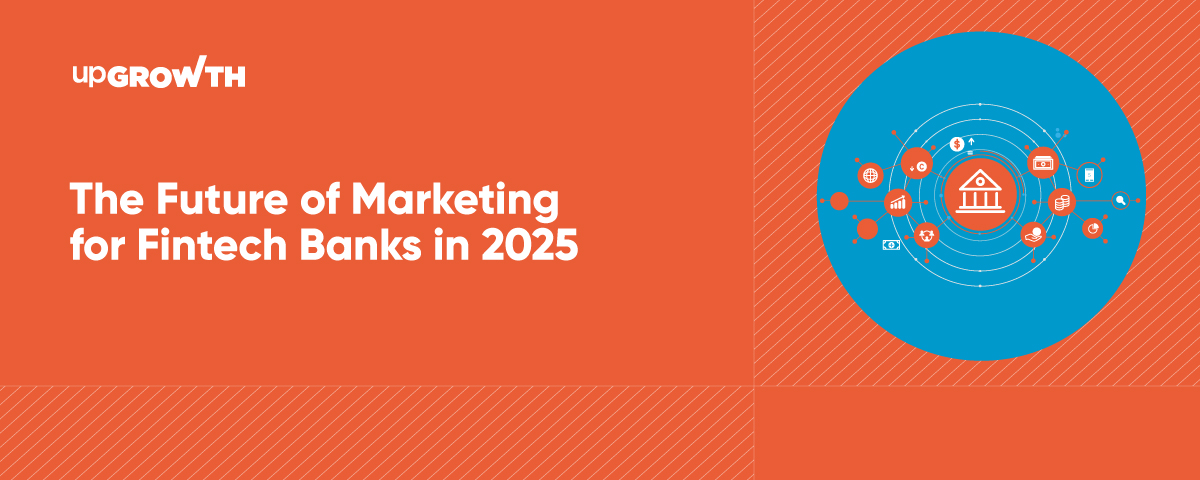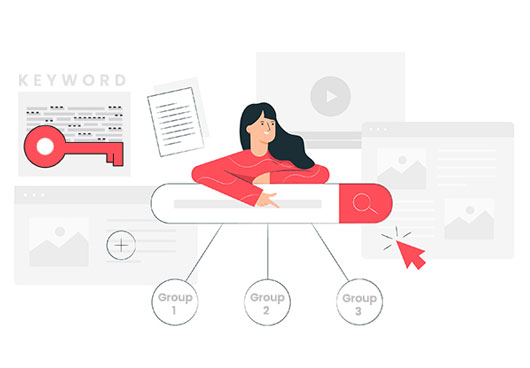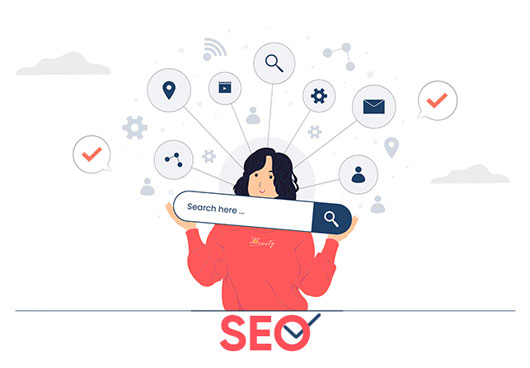The Future of Marketing for Fintech Banks in 2025
Contributors:
Subhashini Sakthivelu
Published: December 6, 2024

Summary
Marketing for FinTech banks is poised for transformation as we approach 2025, driven by technological advancements and evolving consumer expectations. From blockchain integration and AI-powered personalization to enhanced regulatory compliance and open banking initiatives, financial institutions are adapting to meet future demands. With cybersecurity awareness and sustainability becoming increasingly important, successful FinTech banks will need to balance innovative technology adoption with trust-building and social responsibility to maintain competitive advantage in this rapidly evolving landscape.
The financial technology (fintech) landscape is evolving at an electrifying pace, constantly reshaping how we interact with money and financial services. As we approach 2025, marketing for fintech banks is poised for a dramatic transformation driven by technological advancements, shifting consumer behaviours, and an increasingly competitive landscape.
This blog explores the key trends and strategies that will define the marketing future of fintech banks in 2025 and beyond.
What are the Marketing Trends for Fintech Banks In 2025?
1. Mainstream Adoption of Blockchain
- Blockchain technology is moving beyond its association with cryptocurrencies to become a foundational element in financial transactions.
- Fintech banks can market their services faster, more securely, and more transparently by highlighting blockchain’s role in fraud prevention and compliance, such as anti-money laundering efforts.
- Integrating smart contracts can also streamline processes like Know Your Customer (KYC), enhancing customer trust and satisfaction.
Example: Ripple
Ripple, a blockchain-based payment protocol, has successfully partnered with various banks and financial institutions to facilitate cross-border payments. Using blockchain technology, Ripple enables real-time transactions with lower fees than traditional banking methods. Their marketing strategy emphasises the speed and security of their services, appealing to businesses looking for efficient payment solutions.
Marketing Strategies for Blockchain
- Educate Consumers: Fintech banks should focus on educating consumers about the benefits of blockchain technology, emphasising its role in enhancing security and efficiency.
- Highlight Use Cases: Showcasing real-world blockchain applications in financial services can help demystify the technology and build consumer confidence.
2. Increased Regulatory Pressure
- With regulations like the CFPB’s Rule 1033 and the EU’s Digital Operational Resilience Act (DORA) coming into effect, fintech banks must navigate a complex regulatory environment.
- Marketing strategies should emphasise compliance and security, reassuring customers that their data is protected and that the institution is committed to adhering to the latest regulations.
Example: Monzo
Monzo, a UK-based digital bank, has effectively navigated regulatory challenges by maintaining its operations transparently. Its marketing campaigns often highlight its compliance with regulations and commitment to customer data protection. This approach has helped build trust among users, contributing to its rapid growth in the competitive fintech space.
Strategies for Compliance Marketing
- Transparent Communication: To build consumer trust and communicate compliance measures and data protection policies.
- Showcase Security Features: Highlight the security measures to protect customer data, reinforcing the bank’s commitment to regulatory adherence.
3. Transformative Power of AI
- Artificial intelligence is set to revolutionise customer engagement and compliance.
- Fintech banks can utilise AI to analyse customer data, personalise services, and enhance the overall customer experience.
- Marketing efforts should showcase how AI-driven insights lead to tailored products and improved service delivery, positioning the bank as innovative and customer-centric.
Example: ZestFinance
ZestFinance uses AI to assess creditworthiness by analysing non-traditional data points. Their marketing strategy focuses on how AI enables them to offer loans to individuals who may not qualify through traditional means. By showcasing their innovative use of technology, ZestFinance attracts a diverse customer base looking for accessible financial solutions.
AI-Driven Marketing Strategies
- Personalised Recommendations: Use AI to provide product recommendations based on customer behaviour and preferences.
- Chatbots for Customer Service: Implement AI-powered chatbots to provide instant support and enhance customer interactions.
4. Expansion of Open Banking
- The evolution of Open Banking into Open Finance and Open Payments presents new marketing opportunities.
- By promoting the benefits of data sharing and efficient payment processes, fintech banks can attract customers looking for seamless financial solutions.
- However, they must also address potential security concerns, emphasising robust measures to protect sensitive data.
Example: Plaid
Plaid, a fintech company that connects applications to users’ bank accounts, has successfully leveraged open banking to enhance its digital marketing for fintech companies. Plaid has positioned itself as a leader in open banking by allowing third-party apps to access financial data securely. Their marketing strategy emphasises the convenience and security of their platform, appealing to both consumers and developers.
Marketing Strategies for Open Banking
- Educate Consumers: Focus on educating consumers about the benefits of open banking, such as improved service and competitive pricing.
- Collaborative Marketing: Partner with traditional banks and fintech firms to enhance credibility and expand reach.
5. Personalisation and Data Analytics
- In the place where consumers expect tailored experiences, personalisation will be at the forefront of fintech marketing strategies.
- By leveraging data analytics, fintech companies can gain insights into customer preferences and behaviours, allowing them to create targeted marketing campaigns that resonate with individual needs.
Example: Chime
Chime, a neobank, uses data analytics to personalise user experiences. Their marketing campaigns often highlight features like automatic savings and personalised spending insights, which resonate with their target audience of young, tech-savvy consumers. This focus on personalisation has contributed to their rapid growth and customer loyalty.
Implementing Personalisation Strategies
- Dynamic Content: Websites and apps will feature dynamic content that adapts based on user behaviour, enhancing the overall user experience.
- Customer Segmentation: Use data analytics to segment customers and deliver personalised content, offers, and recommendations.
6. Omnichannel Engagement
As consumers engage with brands across multiple platforms, fintech companies must adopt an omnichannel approach to communication. This strategy ensures that customers receive consistent messaging and support, regardless of their chosen channel.
Key Components of Omnichannel Communication
- Integrated Marketing Campaigns: Create cohesive marketing campaigns that span social media, email, and traditional advertising.
- Cross-Channel Support: Ensure customer service is available across various channels, allowing users to switch platforms without losing context.
7. Cybersecurity Awareness
- With rising concerns over data privacy and security, financial marketers will prioritise educating consumers about cybersecurity practices.
- Building trust through transparency will be crucial in maintaining customer loyalty.
Example: American Express
American Express has made cybersecurity a key component of its marketing strategy. It regularly communicates its security measures and provides educational resources on how customers can protect their information. This proactive approach has helped build trust and loyalty among its customer base.
Cybersecurity Marketing Strategies
- Transparency in Security Practices: Communicate the security measures to protect customer data.
- Educational Content: Create informative content that educates consumers about cybersecurity best practices and how to protect their information.
8. Community Building
- Banks and fintechs are recognising the value of building communities around their brands.
- Engaging customers through forums, social media groups, and local events fosters a sense of belonging and trust, which can enhance brand loyalty.
Example: Revolut
Revolut has built a community around its brand by engaging users through social media and forums. They encourage customer feedback and actively involve users in product development discussions. This community-driven approach has strengthened customer loyalty and brand advocacy.
Strategies for Community Engagement
- Local Events and Sponsorships: Participate in community events and sponsor local initiatives to strengthen brand presence.
- Online Forums: Create forums or social media groups where customers can share experiences and provide feedback.
9. Sustainability and Social Responsibility
- Consumers are increasingly inclined to support brands committed to sustainability and social responsibility.
- Fintech companies should incorporate these values into their marketing strategies to attract socially conscious consumers.
Example: Aspiration
Aspiration, a socially responsible fintech company, markets itself as an eco-friendly alternative to traditional banks. It offers features like the ability to plant a tree for every purchase made. Its marketing strategy emphasises sustainability, appealing to consumers who prioritise environmental impact.
Marketing Strategies for Sustainability
- Highlighting Initiatives: Showcase sustainability initiatives and community engagement efforts in marketing campaigns.
- Collaborating with Nonprofits: Partnering with nonprofit organisations can enhance brand reputation and demonstrate a commitment to social causes.
10. The Role of Emerging Technologies
- As technology evolves, fintech companies must explore emerging marketing channels to engage consumers effectively.
- This includes leveraging platforms like TikTok and utilising augmented reality (AR) and virtual reality (VR) experiences.
Innovative Marketing Strategies
- Influencer Marketing: Collaborate with influencers to reach younger demographics and build brand awareness.
- AR/VR Experiences: Create immersive experiences that enhance consumer engagement and provide unique ways to showcase products.
Conclusion
The future of marketing for fintech banks in 2025 will be characterised by personalisation, transparency, and innovative strategies prioritising consumer engagement. Fintech companies can build trust, foster loyalty, and drive growth in an increasingly competitive market by embracing these trends and adapting to the evolving landscape.
At UpGrowth, we are committed to empowering fintech companies to thrive in a rapidly evolving market. Whether you’re looking to enhance your growth marketing strategies or navigate the complexities of the fintech landscape, our expert team is here to guide you every step!
FAQs
1. How important will personalisation be in fintech bank marketing strategies by 2025?
By 2025, personalisation will be crucial in fintech marketing as consumers increasingly expect tailored experiences. Fintech banks will use customer data to deliver customised product offerings and relevant content, enhancing satisfaction and loyalty. This hyper-personalized approach will differentiate banks in a competitive market.
2. What role will artificial intelligence play in fintech bank marketing in 2025?
Artificial intelligence will be central to fintech marketing strategies, enabling automated customer interactions and data analysis. AI tools will help banks understand consumer behaviour, optimise marketing campaigns, and provide personalised recommendations. This technology will enhance efficiency and improve customer experiences through predictive analytics.
3. How can fintech banks leverage data analytics to improve customer engagement in 2025?
Fintech banks can use data analytics to gain insights into customer preferences and behaviours, allowing targeted marketing efforts. Banks can tailor communications and offers that resonate with individual customers by analysing transaction data. This data-driven approach will foster deeper engagement and increase conversion rates.
4. What are the anticipated challenges in marketing fintech banking services in 2025?
Challenges in 2025 will include navigating regulatory complexities and ensuring data security in marketing practices. Additionally, fintech banks will face intense competition from traditional and emerging fintechs. Building customer trust while effectively communicating value propositions will be essential for success in this evolving landscape.
About the Author
Copywriter
Subhashini Sakthivelu is a copywriter at upGrowth, where she plays a pivotal role in leading and executing impactful marketing projects. With a background in various marketing positions at prominent companies, Subhashini brings a wealth of expertise in crafting compelling content that drives engagement. Her strategic thinking and creativity have contributed significantly to uG’s successful campaigns.
 Growth Strategy and Planning
Growth Strategy and Planning Inbound Growth
Inbound Growth Growth Hacking
Growth Hacking Search Engine Optimization
Search Engine Optimization Paid and Performance Marketing
Paid and Performance Marketing Social Media Marketing
Social Media Marketing AI-Driven Growth Strategy
AI-Driven Growth Strategy Marketing Decision Tree
Marketing Decision Tree Case Study
Case Study Growth Tools
Growth Tools Custom GPT's
Custom GPT's Guides
Guides Offers
Offers Quizzes
Quizzes Blog
Blog Insights
Insights

















Leave a Reply